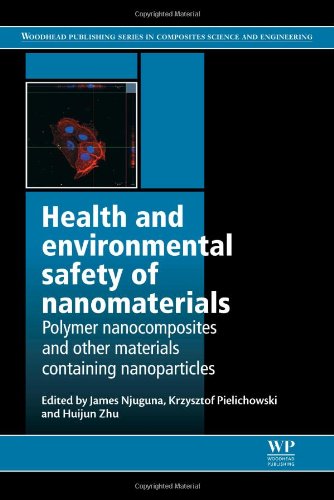

Most ebook files are in PDF format, so you can easily read them using various software such as Foxit Reader or directly on the Google Chrome browser.
Some ebook files are released by publishers in other formats such as .awz, .mobi, .epub, .fb2, etc. You may need to install specific software to read these formats on mobile/PC, such as Calibre.
Please read the tutorial at this link: https://ebookbell.com/faq
We offer FREE conversion to the popular formats you request; however, this may take some time. Therefore, right after payment, please email us, and we will try to provide the service as quickly as possible.
For some exceptional file formats or broken links (if any), please refrain from opening any disputes. Instead, email us first, and we will try to assist within a maximum of 6 hours.
EbookBell Team

4.4
62 reviewsHealth and Environmental Safety of Nanomaterials addresses concerns about the impact of nanomaterials on the environment and human health, and examines the safety of specific nanomaterials. Understanding the unique chemical and physical properties of nanostructures has led to many developments in the applications of nanocomposite materials. While these materials have applications in a huge range of areas, their potential for toxicity must be thoroughly understood.
Part one introduces the properties of nanomaterials, nanofillers, and nanocomposites, and questions whether they are more toxic than their bulk counterparts. Part two looks at the release and exposure of nanomaterials. The text covers sampling techniques and data analysis methods used to assess nanoparticle exposure, as well as protocols for testing the safety of polymer nanocomposites. It explains characterization techniques of airborne nanoparticles and life cycle assessment of engineered nanomaterials. Part three focuses on the safety of certain nanomaterials, including nanolayered silicates, carbon nanotubes, and metal oxides. In particular, it explores the potential ecotoxicological hazards associated with the different structures of carbon nanotubes and the safe recycling of inorganic and carbon nanoparticles. The final two chapters address the risks of nanomaterials in fire conditions: their thermal degradation, flammability, and toxicity in different fire scenarios.
This is a scientific guide with technical background for professionals using nanomaterials in industry, scientists, academicians, research scholars, and polymer engineers. It also offers a deep understanding of the subject for undergraduate and postgraduate students.